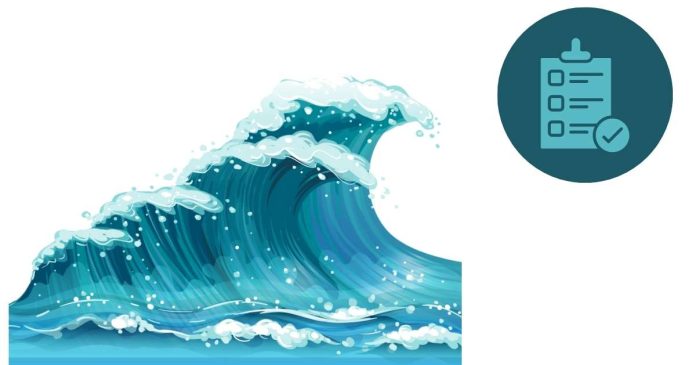1. Pacific Ocean
- Size: The largest and deepest ocean, covering an area of approximately 63.8 million square miles (165.25 million square kilometers), making up about 30% of the Earth’s surface.
- Depth: The average depth is around 12,080 feet (3,682 meters), and its deepest point is the Mariana Trench, with the Challenger Deep reaching a depth of approximately 36,070 feet (10,994 meters).
- Location: It lies between the western coast of the Americas and the eastern coasts of Asia and Oceania, stretching from the Arctic Ocean in the north to the Southern Ocean in the south.
- Significance: The Pacific Ocean contains the “Ring of Fire,” an area with a lot of seismic and volcanic activity. It is also home to diverse marine life and vast ecosystems, including coral reefs and deep-sea environments.
2. Atlantic Ocean
- Size: The second-largest ocean, covering an area of about 41 million square miles (106.46 million square kilometers).
- Depth: The average depth is around 10,930 feet (3,332 meters), with its deepest point being the Puerto Rico Trench, which reaches depths of about 27,480 feet (8,376 meters).
- Location: It lies between the eastern coasts of the Americas and the western coasts of Europe and Africa, stretching from the Arctic Ocean in the north to the Southern Ocean in the south.
- Significance: The Atlantic Ocean plays a major role in global weather patterns, particularly through ocean currents like the Gulf Stream. It is also a vital route for international shipping and trade. Historically, the Atlantic was central to exploration, colonization, and the transatlantic slave trade.
3. Indian Ocean
- Size: The third-largest ocean, covering approximately 27.2 million square miles (70.56 million square kilometers).
- Depth: The average depth is about 12,080 feet (3,741 meters), with its deepest point being the Java Trench, reaching depths of around 24,460 feet (7,450 meters).
- Location: It is located between Africa, Asia, Australia, and the Indian subcontinent. The ocean extends from the southern coast of the Arabian Peninsula and the Horn of Africa in the west to Australia and Indonesia in the east.
- Significance: The Indian Ocean is a major trade route and is heavily utilized for maritime shipping. It is also home to important strategic locations, such as the Strait of Hormuz and the Malacca Strait. The region is known for its warm waters, which influence climate and weather patterns, including the Indian monsoon.
4. Southern Ocean
- Size: The fourth-largest ocean, covering around 7.8 million square miles (20.33 million square kilometers).
- Depth: The average depth is about 12,100 feet (3,682 meters), with its deepest point found in the South Sandwich Trench, reaching about 23,737 feet (7,235 meters).
- Location: It is located around Antarctica and extends north to 60 degrees south latitude, which marks the boundary with the Atlantic, Pacific, and Indian Oceans. The Southern Ocean is sometimes referred to as the Antarctic Ocean or the Austral Ocean.
- Significance: The Southern Ocean plays a crucial role in regulating Earth’s climate. It facilitates the Antarctic Circumpolar Current, which helps circulate cold water around Antarctica, influencing global ocean currents and weather systems. It is also a unique and isolated ecosystem, home to species like penguins, seals, and whales.
5. Arctic Ocean
- Size: The smallest and shallowest ocean, covering approximately 5.4 million square miles (13.98 million square kilometers).
- Depth: The average depth is around 3,407 feet (1,038 meters), with its deepest point being the Fram Basin, which reaches depths of about 17,880 feet (5,450 meters).
- Location: It is located around the Arctic region, bordered by the northern coasts of North America, Europe, and Asia. It is surrounded by the Arctic landmasses and is connected to the Atlantic and Pacific Oceans.
- Significance: The Arctic Ocean is a critical area for understanding climate change, as it is experiencing significant warming and loss of ice. The region is also rich in natural resources like oil and natural gas, which has led to geopolitical and environmental concerns. The Arctic Ocean is vital for global weather patterns and the migration of species like whales and polar bears.
Each of these oceans plays a distinct role in Earth’s ecosystems, weather systems, and economies. They are interconnected through global ocean currents, which help regulate the planet’s climate and transport heat across the globe.


